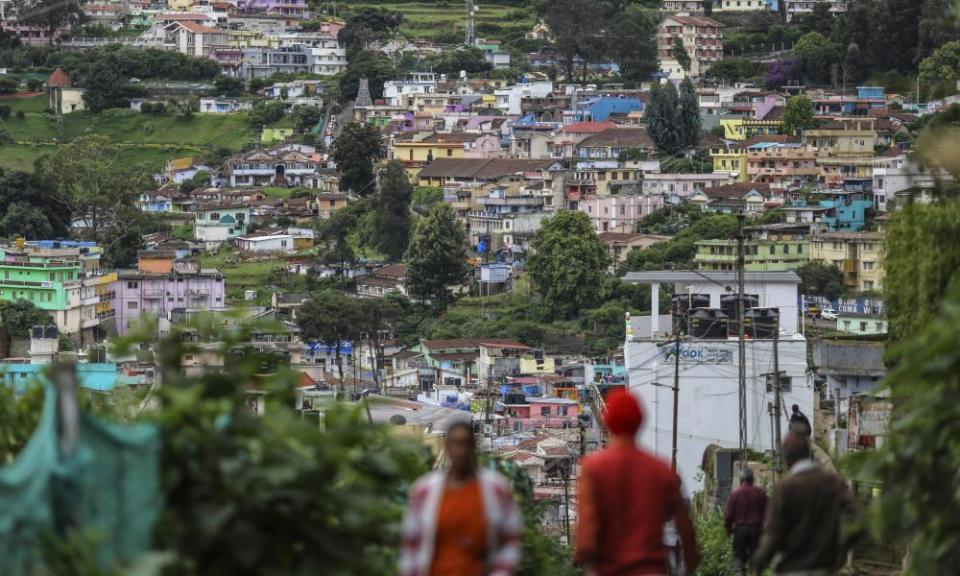The Mission House by Carys Davies – in EM Forster's footsteps

The British have tended to view Anglo-Indian relations through misty eyes, as if the empire were some kind of love affair. Enoch Powell mused, dreamily, that “the British were married to India as Venice was married to the sea”. Well, yes – if you think it’s romantic to have been bombarded by gunships at the wedding. EM Forster understood that the intimacy was forced; A Passage to India is all about the impossibility of genuine friendship between sahib and subject. His novel ends with the admonition that Britishers and Indians could only truly connect once India is freed.
The award-winning Welsh writer Carys Davies now revisits this Forsterian theme in The Mission House, a novel about the pitfalls of human connection in contemporary India. Set in Ooty, a southern hill station, the narrative concerns the intersecting lives of a group of locals and foreigners. Foremost among them is Hilary Byrd, a middle-aged librarian from London who has come to India to convalesce from a nervous ailment.
Depressed and directionless, he ends up in Ooty after a chance invitation from the local padre. On arrival Byrd is guided by “the church’s white spire, pointing like a compass needle into the misty sky”. The spire, perhaps the book’s enduring image, orients Byrd throughout his stay in town as a tenant of the padre’s mission house. It has intimations of a moral compass, too, since Byrd’s involvement with the parish helps him regain his bearings on life. This newfound peace is “like being in an ark that had come to rest”, a description that shows the disbelieving Byrd slipping into a new, Christian idiom.
But Byrd’s peace of mind rests on a sahib-like hauteur. On daily trips with his driver and de facto therapist Jamshed, he never listens back. He treats the padre with suspicion and assumes there is a scheme afoot for Priscilla, the young housekeeper, to marry him. When he eventually falls for her, he has little clue that she actually prefers Ravi, a hairdresser-cum-country singer. What Byrd feels for Priscilla isn’t love, which occurs between equals; it’s pity, which condescends. More than 70 years after independence, relationships between Indians and westerners still seem compromised by the same conceited, feverish misapprehension as in A Passage to India.
Unlike the loose-lipped Forster, however, Davies prefers to leave the politics submerged in suggestive detail, occasionally bubbling up – such as during Byrd’s reading lessons for Priscilla. For him, it’s an occasion to revisit the beloved Ladybird books of his childhood. Stepping inside Priscilla’s head – the book is narrated in a close third-person that moves between characters’ perspectives – we learn she hates these “horrible old books from the UK” with their “silly, boring titles” referencing Julius Caesar and Walter Raleigh: stalwarts of a history that is not India’s.
Neither, of course, is the language, Davies’s use of which reveals an ear finely tuned to subcontinental peculiarities. These, too, have their political subtext. The brand names around Ooty (“Modern Stores”, “Global Internet Cafe”) parody perfectly that postcolonial insecurity about being “backward”. She also has fun with the bureaucratic mannerisms of Indian-English, a purely official language that even in its everyday usage has a whiff of the filing cabinet. A sign warns, comically: “DOG IS ON DUTY”.
The Mission House is an interesting take on a familiar trope: the westerner who finds in India deliverance from the wasteland of modernity (epitomised in Byrd’s mind by Bromley public library with its self-checkout stations and its dearth of dictionaries). What’s different is that this isn’t the India of unadulterated eastern spirituality that normally greets that stock character. There are no banal mantras, no cryptic mystics. Jamshed, Ravi and Priscilla are all atheists.
Byrd instead sees in India a vision of long-lost Englishness. Ooty, built by colonists, is “like a little corner of England” – but one where you can still find girls called Priscilla. Byrd loves the “gingerbread eaves” of the post office and “the Victorian splendour of the old library”, so unlike the one he works in. It is church he finds himself attending, not mosque or mandir. Forster went to India to escape the prudery and formality of England, the very England Byrd relishes seeing alive in today’s India.
This nostalgia seems in Byrd’s mind apolitical. He is blind to Ooty’s looming far-right zealots, for whom Christianity symbolises subjugation. They take him by surprise in a twist that is dramatically unconvincing, yet thematically necessary. Byrd is like so many others, from beatniks to empire loyalists, who form a connection not with real Indians but with a fantasy of India fashioned out of their own ideological prejudices and psychological needs. The Mission House truthfully reveals that the new realities of India will increasingly have their revenge on these tired old romances.
• The Mission House is published by Granta (£12.99). To order a copy go to guardianbookshop.com. Delivery charges may apply.

